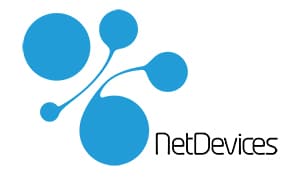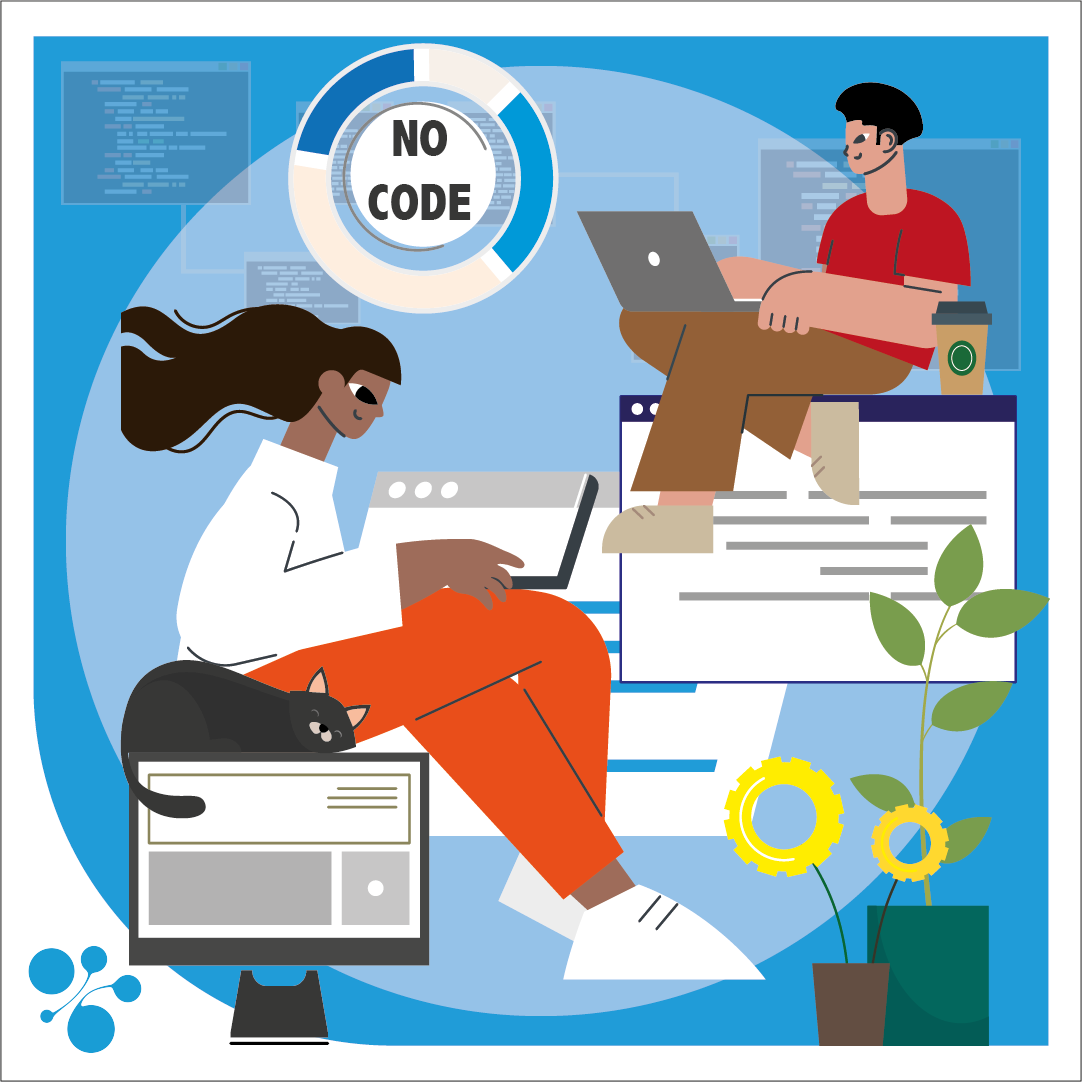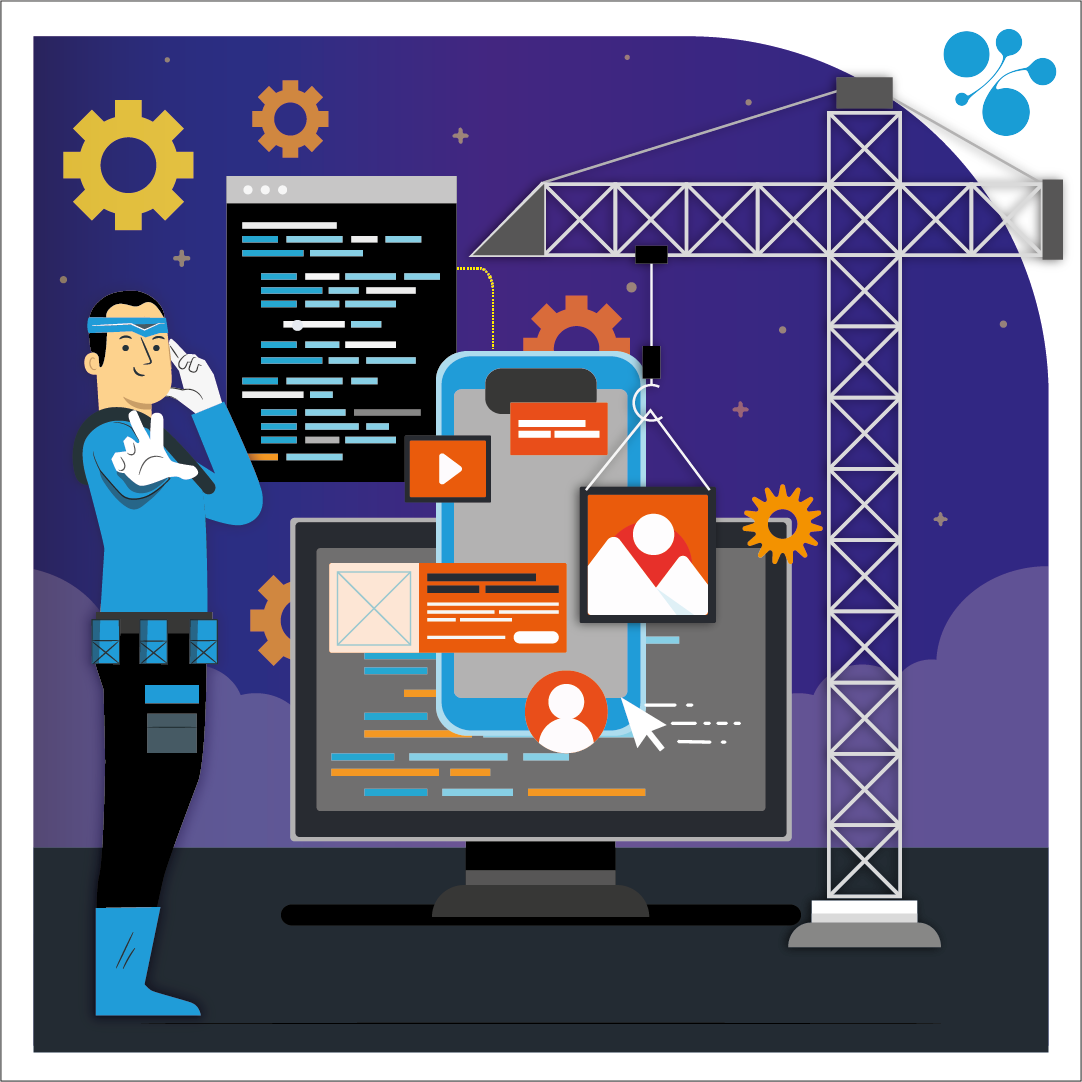Il y a plus d’une vingtaine d’années, le no-code a fait son entrée dans le monde des technologies. En 2010, cette nouvelle solution apparaît encore limitée en termes de fonctionnalités et de capacités.
Avec la montée en puissance de la digitalisation, NetDevices s’intéresse à l’évolution croissante des outils. Le no-code gagne en popularité. La pandémie Covid-19 et la crise économique participent à cette croissance. En effet, les entreprises recherchent des solutions moins coûteuses pour leurs projets technologiques.
Aujourd’hui, il est possible de créer des applications et des sites web sans avoir besoin de connaissances en programmation. Il devient possible de concevoir des produits numériques plus facilement. Il n’est plus indispensable (mais fortement souhaitable) de se former pendant plusieurs mois pour appréhender les langages et les cadres de la programmation. À la place, les solutions no-code offrent des interfaces agréables. La mise à jour des sites web et des applications est également facilitée.
Le marché du low code/no-code gagne du terrain en France.
Les startups, les PME et même les grandes entreprises françaises adoptent de plus en plus cette approche. Les entreprises nationales qui intègrent le no-code dans leur organisation, de manière hybride, sont souvent à la pointe de la technologie et de l’innovation. Elles cherchent à travailler plus efficacement et de manière plus agile.
Ceci est particulièrement intéressant pour les petites entreprises et les startups qui cherchent à lancer rapidement leur produit sur le marché. En particulier pour créer un MVP (Minimum Viable Product) qui est le point de départ d’un nouveau projet. Cette méthode est très populaire chez les startups et les entreprises de développement de produits.
Les plateformes no-code amènent donc les développeurs à créer des MVP plus rapidement et à moindre coût. Les entreprises peuvent tester rapidement des idées et itérer leur produit en fonction des commentaires des clients.
Grâce au no-code, les coûts de développement diminuent ce qui est crucial dans un environnement commercial en constante évolution où le temps est un facteur critique pour le succès d’une entreprise.
Les outils low code/no code sont de plus en plus nombreux.
Ils offrent une vaste variété de fonctionnalités. Cela passe par la création de sites web simples à des applications plus complexes, incluant la gestion de base de données et la gestion des processus métier. Les entreprises ou organismes choisissent les outils no-code qui répondent le mieux à leurs besoins du moment.
Voici quelques exemples d’outils principaux :
- Application web ou mobiles : Bubble.io (simple et complexe), Glide, Adalo, Outsystems
- Site internet : Bubble, Webflow, Umso, Wix
- Automatisation de tâches : Zapier, Make (solution plus économique que Zapier)
- Outils statistiques : Airtable, Clikup, Retool, Caspio
- CRM, ERP, outil de gestion : Bubble, Notion, Webflow
Le no-code/low code est une tendance à suivre de près. Le secteur de l’entrepreneuriat et du développement web sont principalement touchés par l’avancement de cette méthode qui modifie la nature du travail et impacte ce marché.
La progression du no-code permet à des personnes éloignées de l’entrepreneuriat de renouer avec la création d’entreprise. Puisque celle-ci est facilitée. Pour les agences de développement, les développeurs peuvent se concentrer sur des tâches plus complexes et plus spécialisées, en laissant les tâches plus courantes à des solutions no-code.
Il convient de souligner un point. Même si les outils no-code ont considérablement simplifié la création de sites web et d’applications, cela ne signifie pas pour autant qu’un néophyte peut se passer de l’expertise d’une équipe de développement web.
La conception / création d’un site web ou d’une application nécessitent une compréhension de la logique et de la structure informatique.
De plus, bien que les outils no-code puissent permettre de gagner du temps et de l’argent, ils ont également leurs limites en termes de personnalisation et de fonctionnalités avancées, nécessitant d’avoir aussi des modules développés en technologies telles que le javascript.
Ainsi, une agence de développement web peut apporter une valeur ajoutée par la proposition de solutions sur mesure et l’optimisation des performances. Elle peut proposer une stratégie no-code afin de s’adapter au mieux au budget de ses clients. Certains projets nécessitent quant à eux un mode de développement hybride mélange de no-code et de high-code. Il ne faut pas oublier que le nocode pose le problème de l’évolution technique des solutions.
Faire appel à une agence web c’est aussi la garantie d’une bonne architecture, de l’évolutivité du code, de la scalabilité du projet et de la sécurité des applications.
Pour conclure, la quête de diversité des idées et des approches pour façonner l’avenir de nos sociétés conduit à une nouvelle révolution industrielle. La démocratisation des outils no-code s’intègre dans cette démarche.
Ceci est d’autant plus vrai que l’IA, moteur de la révolution, et le no-code peuvent se combiner.
Ils créent ainsi des applications web plus avancées et facilement accessible. Avec l’avènement de l’apprentissage automatique et de la Computer Vision, l’IA et le no-code vont radicalement changer le développement web en 2023 et dans les années à venir. L’IA permet aux ordinateurs de penser, la Computer Vision (vision par ordinateur) leur permet de voir, d’observer et de comprendre.
Les développeurs de technologies d’IA affirment que le no-code ouvre enfin la voie à la simplicité. En effet, la création d’applications d’IA à l’aide de plateformes no-code sera accessible pour un large public fournissant une interface visuelle facilement utilisable pour déployer des modèles d’IA.
Partager la publication "Le no-code en France : une tendance en vogue qui se démocratise"



